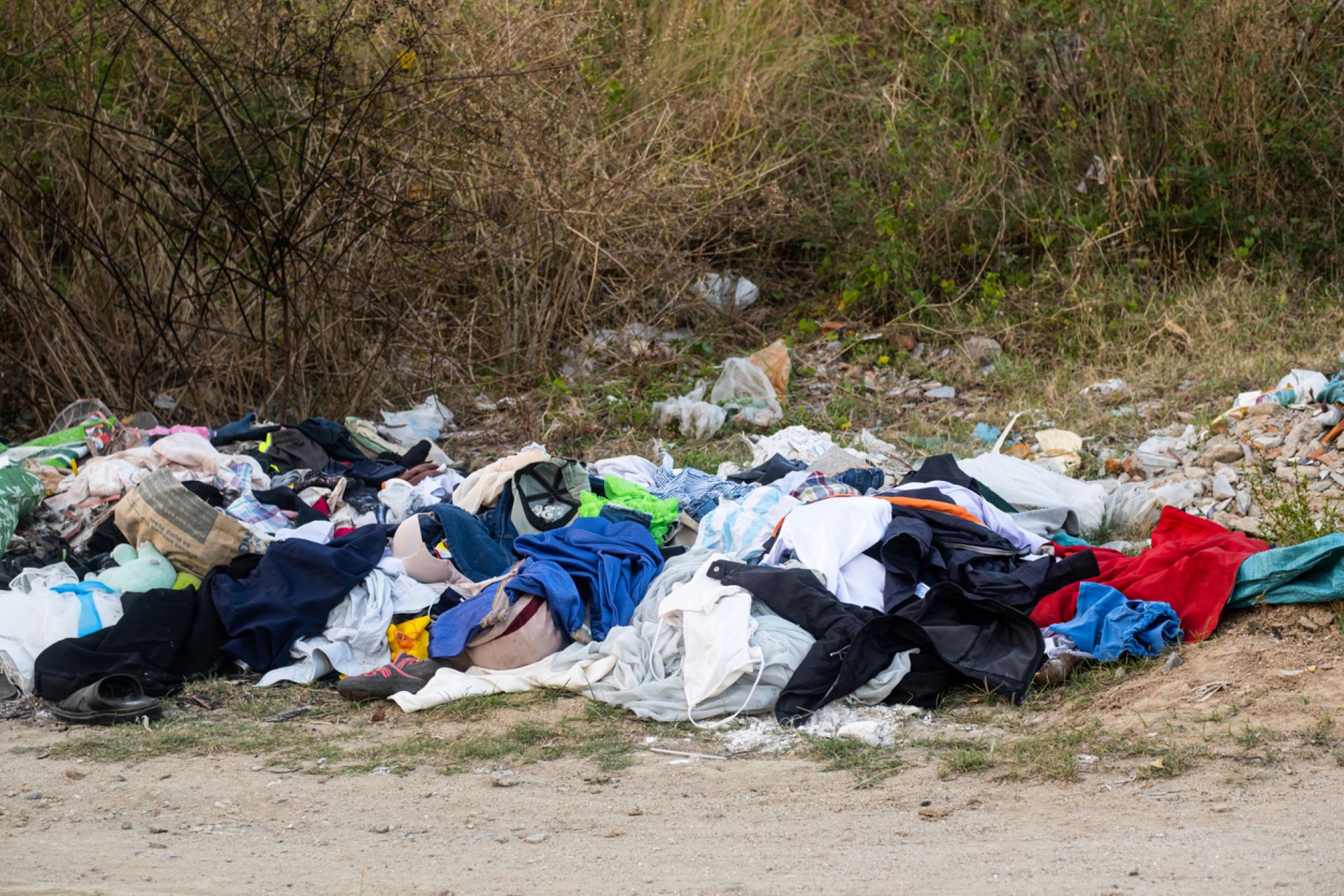Fashion
Non-profit sounds the alarm on toxic fast-fashion dumpsites taking over open spaces: ‘Picture … being on a beach and not even walking on sand’

Greenpeace slammed the fast fashion industry after a new report exposed the shocking environmental and health impacts of waste from cheap, unsellable clothing in Ghana.
What’s happening?
The joint report by Greenpeace Africa and Greenpeace Germany revealed that each week, around 15 million pieces of discarded clothing are imported to Ghana from the Global North. Nearly 50% of the clothes are of such poor quality that they cannot be sold in secondhand markets in Accra, the country’s capital.
Because Ghana doesn’t have the proper infrastructure to recycle or repurpose the massive piles of textiles, most end up in landfills or burned to heat water at public washhouses. Not only is this harmful to the environment, but it’s also putting people’s health at risk.
Many of the clothes contain plastic, which is extremely dangerous when burned since it releases toxic chemicals such as benzene, styrene, and polycyclic aromatic hydrocarbons into the air. These chemicals are known for being carcinogenic and can cause reproductive dysfunction, among many other health issues, with long-term exposure.
“The benzene levels we found inside those wash houses were nearly 200 times higher than European recommended standards,” Sam Quashie-Idun, head of investigations at Greenpeace Africa, told France 24.
He explained that fast fashion waste also affects the livelihoods of local fishermen who must continuously remove pieces of clothing from their nets, which hampers productivity. A staggering amount of waste is washing up on beaches as well, ruining the scenic views and hurting marine ecosystems.
“I want people to really picture just being on a beach and not even walking on sand,” Quashie-Idun said.
Why is the report important?
As the report explained, the fashion waste is contaminating local air, water, and soil, creating what Greenpeace called a “public health disaster” for Ghana’s residents. Plus, testing of the clothing showed that almost 90% are made of synthetic fibers such as polyester, which contributes to microplastic pollution.
“The clothes we tested are literally poisoning the people of Accra,” said Quashie-Idun, the report’s author.
🗣️ What should the government do about the fast fashion industry?
🔘 Set strict regulations 🚫
🔘 Incentivize sustainable options 💰
🔘 Use both regulations and incentives 🏛️
🔘 Nothing 🙅
🗳️ Click your choice to see results and speak your mind
In addition, stallholders and market sellers in Kantamanto — Accra’s largest secondhand clothing market — are losing money since so much of the imported clothing is unsellable, making it harder to earn a decent living.
Quashie-Idun believes fast fashion waste is a symptom of a larger problem and says richer countries should take more responsibility for properly disposing of the clothing.
“The situation in Ghana reflects a neocolonial mindset where the Global North profits from overproduction and waste, while countries like Ghana pay the price,” Quashie-Idun said in the report.
“Essentially Ghana is being seen as a dumping ground. … There’s no reason why countries in the Global North should be sending bad quality products to Ghana,” he told France 24.
What’s being done about fashion industry waste?
Greenpeace urges the Ghanaian government to ban low-quality fast fashion imports and calls for more accountability from fashion brands. Quashie-Idun believes local solutions can bring about positive change and suggests that the government and the community collaborate to develop a sustainable local textile industry.
Major fast fashion brands such as Shein, Temu, and AliExpress are coming under fire for their unsustainable clothing and exploitative labor practices. Hopefully, this will prompt them to change their ways as more people shed light on the industry’s flaws.
Luckily, plenty of companies are moving the needle on fashion industry waste. For example, Patagonia, The North Face, and Levi’s offer customers store credit when they bring in used clothing.
Shopping at thrift stores, mending your torn clothes, and supporting eco-friendly clothing brands are other excellent ways to reduce fashion waste and save money.
Join our free newsletter for good news and useful tips, and don’t miss this cool list of easy ways to help yourself while helping the planet.










